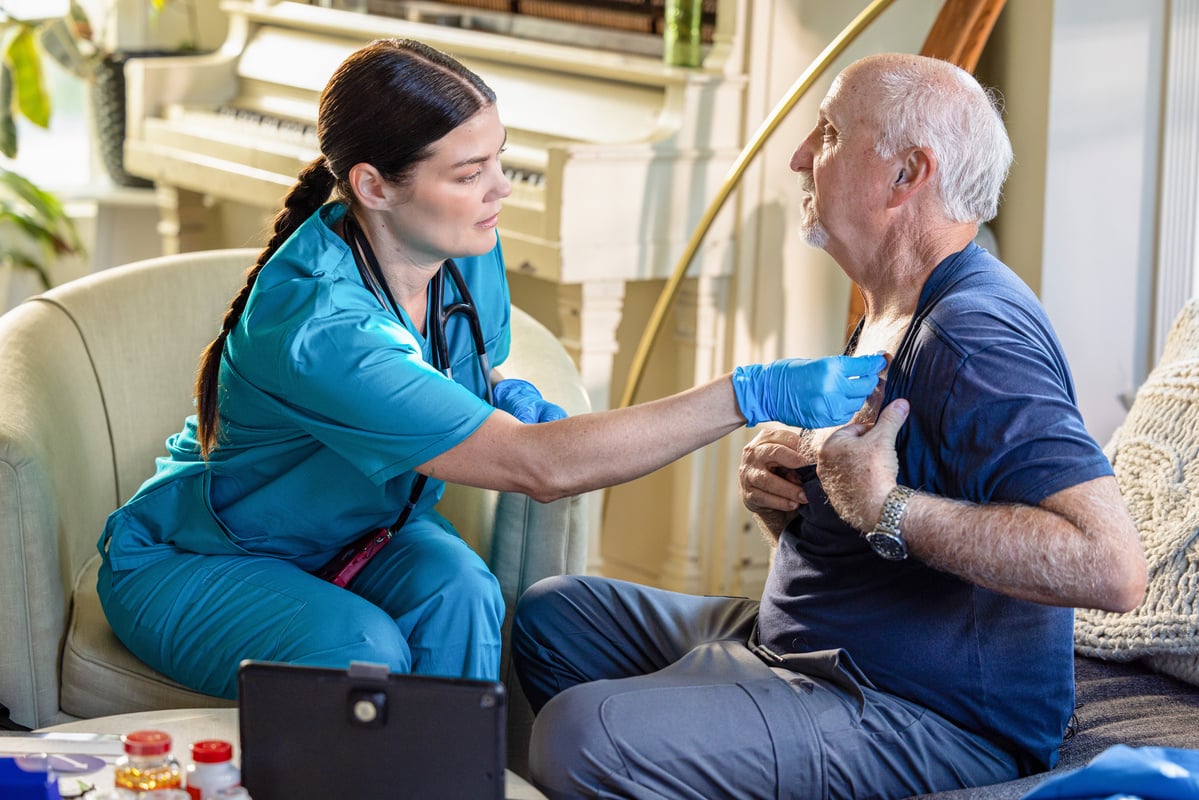
Cardiac arrhythmias (or heart arrhythmias) are abnormal heart rhythms that result from disruptions in the heart’s electrical system, causing the heart to beat too fast, too slow, or irregularly. While some arrhythmias are harmless, others can lead to serious complications such as stroke, heart failure, or sudden cardiac arrest, making early detection and management critical.
Atrial fibrillation (AFib) is one of the most common sustained forms of arrhythmia and causes the upper chambers of the heart to beat irregularly, predisposing to clot formation and risk of stroke and heart failure. Arrhythmias, particularly AFib, pose a significant health challenge and are estimated to impact up to 5% of the U.S. population. It is estimated that up to 23% of Americans living with AFib are undiagnosed and at high risk of complications.
In an effort to be more proactive about identifying and managing members at risk, Signify Health is bringing cardiac diagnostics and care into health plan members’ homes as part of the In-Home Health Evaluation. In December 2023, Signify Health began offering continuous electrocardiogram (cECG) monitoring to eligible members who may be at risk of arrhythmia. The cECG monitor is a small, convenient to use heart monitor that provides continuous capture of cardiac activity. After 14 days of wear, members return the monitor via mail. Data from the monitor is reviewed by a cardiologist to determine if there is an arrhythmia. All findings are communicated to the member and shared with the member’s primary care provider, if known, and health plan.
Mr. Jones's Story
After over a year, numerous members have been diagnosed with arrhythmias who otherwise may have gone undiagnosed. One example is Mr. Jones, an 80 year old man with a history of hypertension, who was identified as having an elevated risk for arrhythmias and provided a cECG monitor.
Mr. Jones wore the cECG monitor for 14 days. On day three, he noted symptoms of chest pain and pressure and on day seven, similar symptoms as well as arm and neck pain/tingling. During both episodes, his cECG monitor captured premature heart beats coming from the top and bottom heart chambers (atria and ventricles).
On the 10th day of wear, the cECG monitor captured data showing that Mr. Jones went into a type of arrhythmia called ventricular tachycardia - a fast, abnormal heart rhythm originating in the ventricles. This episode lasted 67 minutes. Following this episode, he experienced another episode of arrhythmia, in this case AFib lasting 13 minutes, further increasing his risk of stroke.
Upon reviewing the monitor’s data, a cardiologist promptly called Mr. Jones to discuss the findings of his monitor. It was revealed that he had visited the emergency room on day ten but was sent home after standard clinical monitoring failed to detect any critical abnormalities. After receiving the cardiologist’s urgent recommendation, he returned to the ER for further evaluation and treatment.
Mr. Jones’ case highlights the challenges of a high risk patient going undiagnosed in the traditional care setting, the power of bringing cardiac monitoring into the home, and how a cECG monitor can potentially save someone’s life.
* Note: the member’s name and identifying details have been changed.
